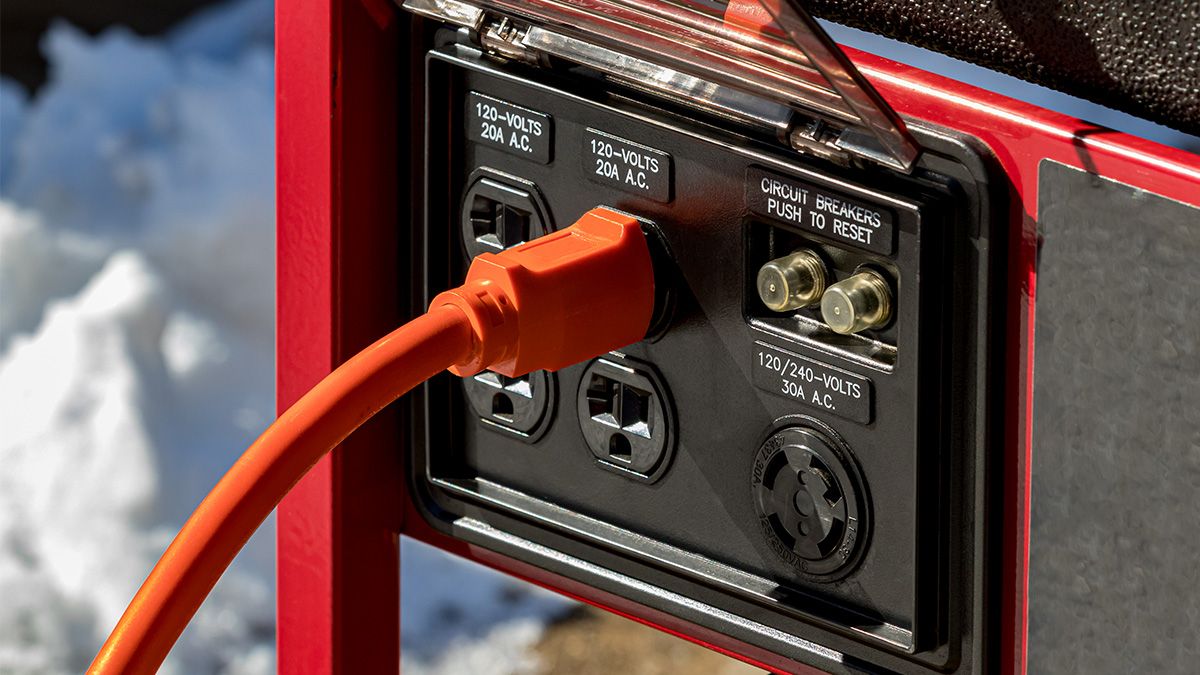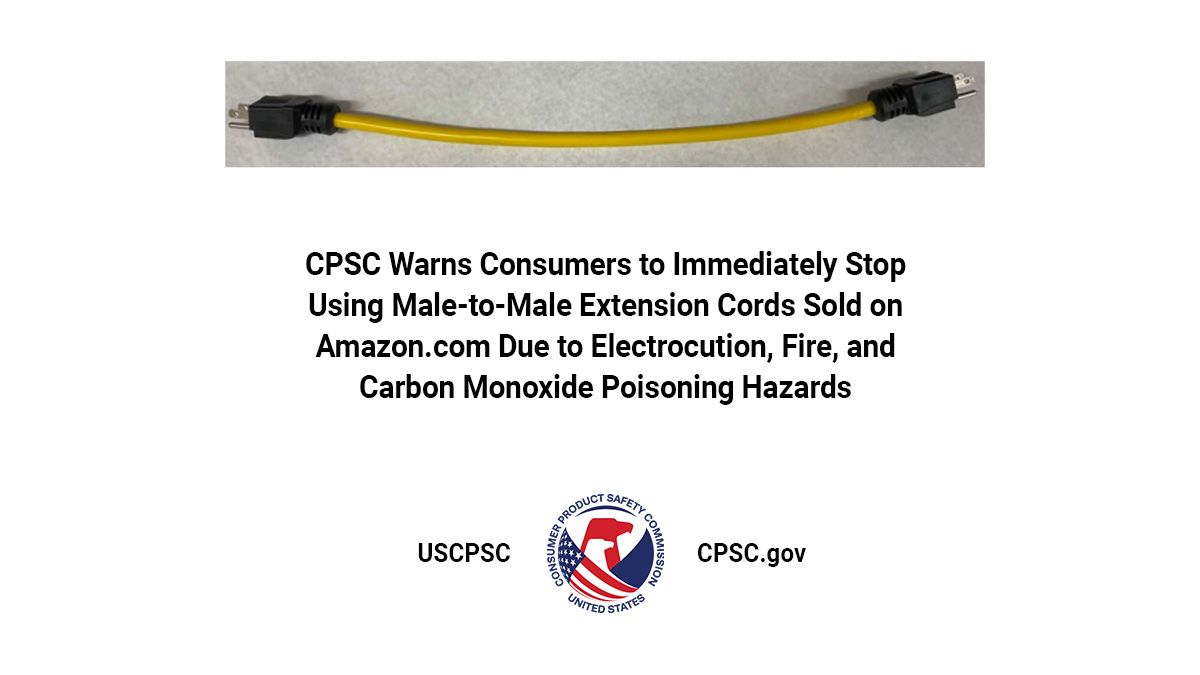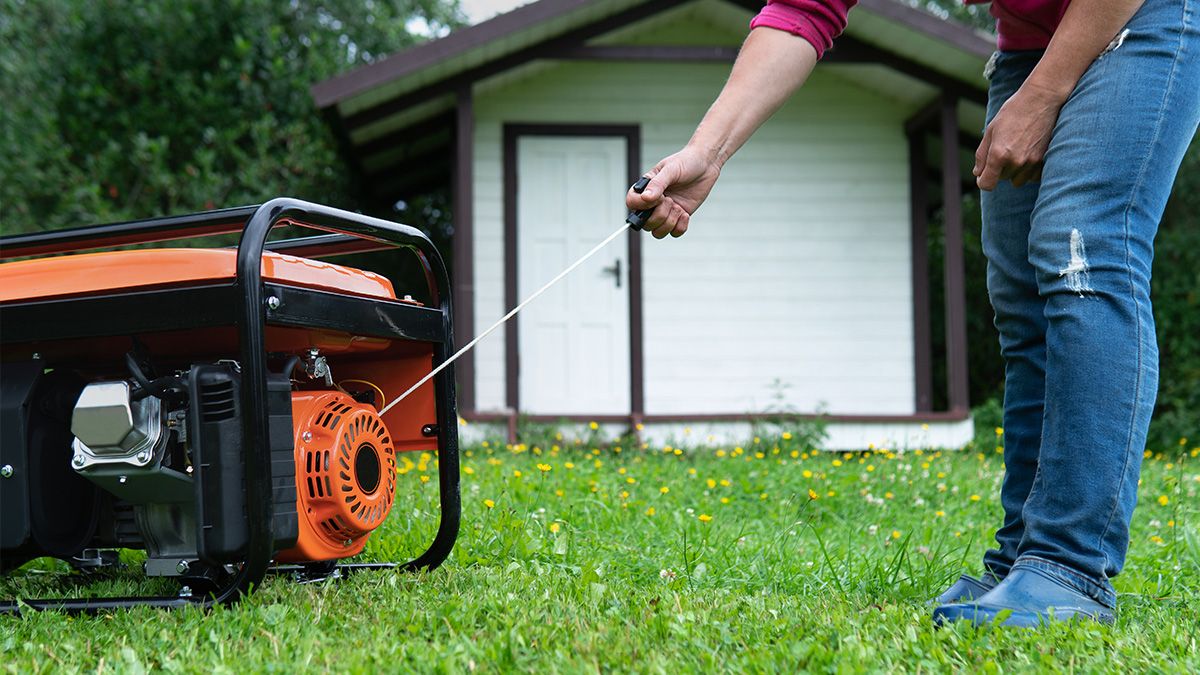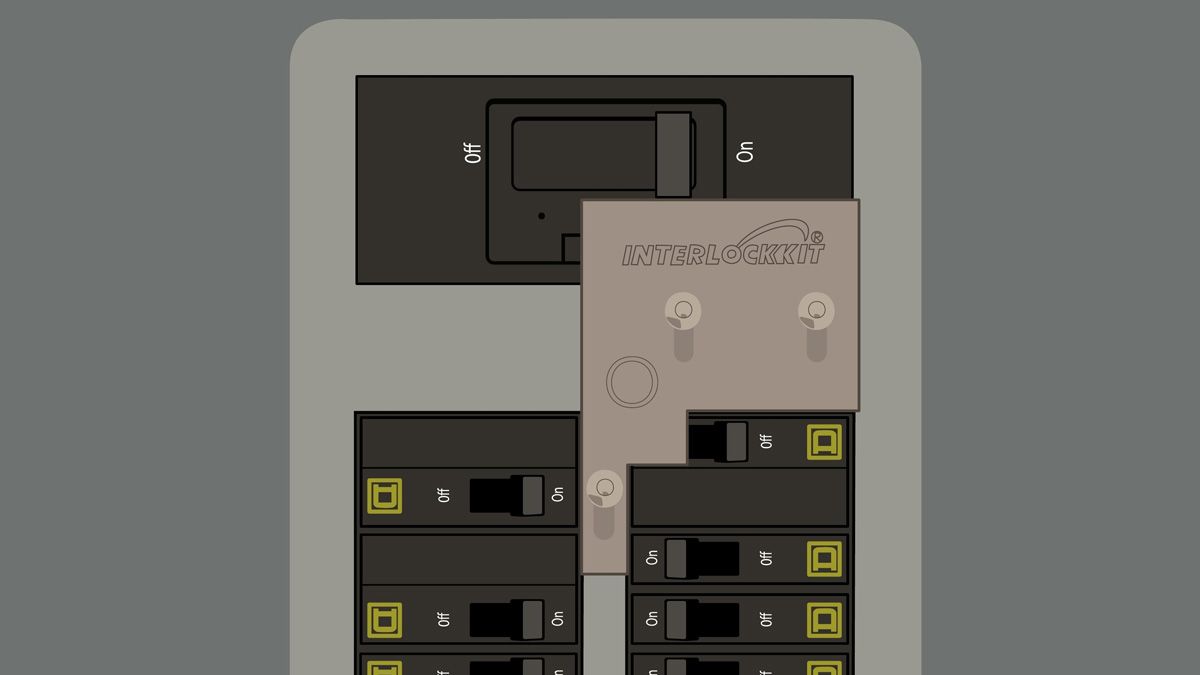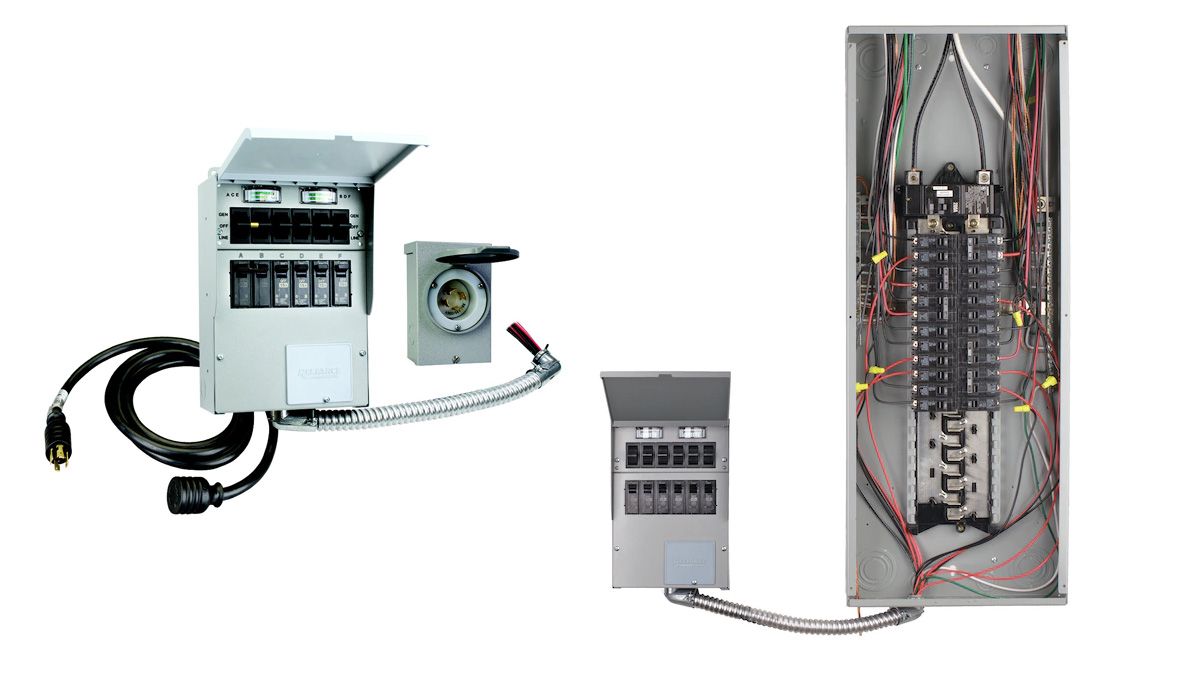Key Takeaways
Improperly hooking up your generator can burn your house down or kill line workers. A properly connected generator has safety mechanisms to prevent both outcomes.
It might be tempting to hook a generator directly up to your home's electrical system during a power outage, but there's a right and wrong way to do it. And the wrong way can cause fires and even kill people, so it's best to read up about the matter in advance.
First, the Wrong Way to Do It
You may have seen pictures on social media of power cords with two male ends (both ends have prongs) instead of the traditional male-female design you'd expect.
Often these images are accompanied by some "clever" advice about how to use the cord to hook up a generator to your home during a power outage so you can use a few circuits to keep your fridge and some ceiling lights on or such.
Unscrupulous Amazon resellers were even selling the cords premade, prompting Amazon to pull the listings and the U.S. Consumer Product Safety Commission to issue a warning about them.
Using such cords, whether you bought one or fashioned it yourself, is extremely dangerous on multiple levels. First, the cord itself. Electricians commonly refer to these, in complete seriousness, as a "suicide cord," "suicide snake," "dead man's cord," or "widow maker" because running power through an extension cord such that you can grab the live end is, well, deadly and can cause fires.
Further, the process of hooking up a generator to your home by plugging in a male-to-male power cord to a regular wall outlet (to power the circuit that outlet is part of) is poorly controlled "backfeeding" and is dangerous.
Improperly backfeeeding a generator into your home can cause fires, property damage, and even death.
You can cause electrical fires in your home by overloading the smaller gauge wire in the individual circuits. You can destroy the generator and cause a fire if the power comes on while you're back feeding and shorts out the generator.
That's an immediate threat to your safety and your home (and if you burn your house down doing something stupid like backfeeding a generator into your home's electrical system in a fashion against building code, your insurance company won't cover the damage you do).
Worse than just harming yourself and your property with poor choices, backfeeding can lead to electricity getting backfed not just into your home but down the line into your neighborhood's electrical system.
Not only can this kill the line workers trying to restore power to your neighborhood---a tragedy that could be avoided entirely---but it can damage the electrical system. At best, this extends the power outage, making repairs take longer. At worst, you could start a fire in your neighborhood and burn down your neighbor's house instead of your own.
Finally, in many jurisdictions it's illegal to hook up a generator to your home without the proper safety precautions and wiring in place.
Given the multiple ways that improperly backfeeding a generator into your home can cause fires, property damage, and even death, there's no good reason to do it.
How to Use a Generator Safely
There are three ways you can safely use a portable generator to power your home during a power outage. Before discussing the different methods, let's talk about general generator safety first.
The Golden Rules of Generator Safety
In addition to only using the generator in the three safe methods that we're about to outline, there are some basic safety guidelines to keep in mind.
First, never run your generator in an enclosed space. It might be tempting to run it in your garage to keep it out of inclement weather (or because you don't have a long enough extension cord), but doing so significantly raises the risk of dangerous exhaust fumes entering your home.
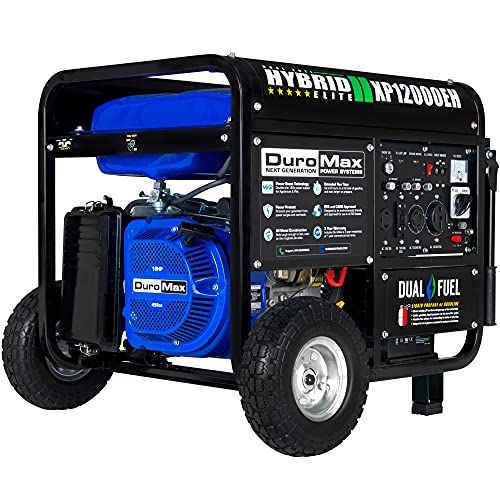
DuroMax XP12000EH Generator
This large capacity dual fuel generator from a company with an excellent reputation is a great pick for folks trying to keep not just the fridge running, but the lights and more too.
Second, run the generator at least 20 feet away from the structure of your home and in an area free from flammable materials like piles of leaves, wood piles, etc. If you don't have a long enough cord to do this, now is the time to buy one.
Third, position the generator so that the exhaust is venting away from the structure. Every little bit helps to keep harmful gases like carbon monoxide away from your living space.
Plug Appliances Directly into the Generator
Plugging devices directly into the generator is the simplest way to use a generator, and if the power outage is already underway and you haven't prepared in advance to use the generator, it is the only safe way to use it.
It's inconvenient compared to the other methods, to be sure, but if you haven't wired your home in advance to use generator power, then you're left running an appropriately large gauge 20A extension cord, or even a 30A extension cord specifically designed for use with a generator, to power key area of your home to power critical things.
You might run the cable through a cracked window into the kitchen, for example, to keep your refrigerator and freezer running and power your phone. It's not exactly luxurious off-grid living, but it will get the job done safely.
The upside to this method is that you can deploy it immediately if you have the generator and the appropriate extension cords on hand. It requires no special electrical work or additional expense.
The downside is that you cannot power anything that is hardwired directly to the electrical panel in your home such as furnaces, well pumps, water heaters, and other similar appliances and devices.
Use an Interlock Kit
An interlock kit is the least expensive way to safely backfeed a generator into your home. It must be installed in advance by a licensed electrician and according to the local building codes.
The way an interlock kit works is very straightforward. A new circuit breaker is added to the breaker panel in your home, positioned near the top of the stack by the main breaker. This breaker is connected to a large gauge wire that goes to a power inlet box on the side of your home---this box looks very similar to the power inlet ports on recreational vehicles and large boats.
The actual "interlock" component is a metal plate that functions as a safety switch. This plate is mounted to the metal face of your circuit breaker box and is designed so that you cannot have the main breaker and the generator circuit breaker switch turned on simultaneously. If you flip the breaker for the generator feed, the main breaker is turned off and vice versa.
In the screenshot above, showing an interlock kit from the appropriately named interlockkit.com, you can see how when, properly installed, it's impossible to have both the main breaker and the dedicated generator breaker turned on at the same time.
The interlock component must be selected specifically for the circuit breaker box you have as the size of the plate must match the size and position of your main breaker and the breaker dedicated to the generator. Using an incorrectly sized interlock defeats the purpose of using the interlock.
On the upside, this design eliminates the risk of backfeeding electricity into the electrical grid and provides an appropriate feed from the generator to your home so that you can power individual circuits and enjoy a relatively normal experience during a power outage. It also allows you to use hardwired devices like your furnace and well pump.
On the downside, this design requires you to manually transfer the power and adjust the circuits accordingly. You have to throw the interlock switch and then carefully turn on only the circuits you need to power (and which your generator can support). If you don't turn off all the circuits and then selectively turn them on, you'll likely overwhelm the generator, as people typically don't have generators sized to power their entire home at 100% capacity.
Additionally, while interlock kits are allowed in most jurisdictions, in some areas, they are considered illegal and do not meet building code requirements for preventing electrical backfeeding. If you're curious why it's because the interlock switch is attached to the metal front plate of the electrical panel. Thus, if you remove the plate, you remove the safety feature, and the panel and generator can operate unsafely.
Use a Transfer Switch
A transfer switch, also called a transfer panel, is a more complex generator interface than a simple interlock kit. Like an interlock kit, it must be installed by a licensed electrician and to local building codes.
The transfer switch is a secondary electrical panel installed next to your primary panel. Working with your electrician, you select circuits you switch to keep active during a power outage using generator power. Those circuits are wired into the transfer switch and in the event of a power outage, you use the transfer switch to control your power system instead of the main breaker box.
Transfer switches for residential applications come in two flavors, manual and automatic. With the manual version, which you would use with a portable generator, you flip the breakers in the transfer panel to change the circuits you wish to use from line power to generator power. The image above shows a Reliance brand manual transfer switch kit (on the left) and what that kit looks like when wired into the main panel in your home (on the right).
Automatic transfer switches are used with whole-house standby generators that are permanently installed and ready to go at a moment's notice. They automate the process and switch the preselected circuits over to generator power within seconds of your home losing power.
Transfer switches cost more to install as they have more components and significantly more labor is required than when installing a simple interlock kit. They are, however, easier and safer to operate. Further, unlike interlock kits, you shouldn't have issues with local building codes.
Regardless of which method you use, you should always use properly rated extension cords and have any electrical work in your home done by a licensed electrician.
And if this all seems like a lot of work when all you really want is to charge your phone and laptop while the power is out for a few hours, consider skipping a generator and getting a power station like the Anker Powerhouse---a model that combines a high-capacity battery with LED emergency lighting. You can't run your fridge off a power station, but you can run and charge small electronics and devices.

